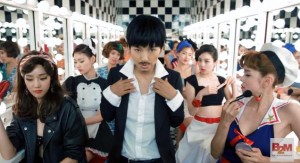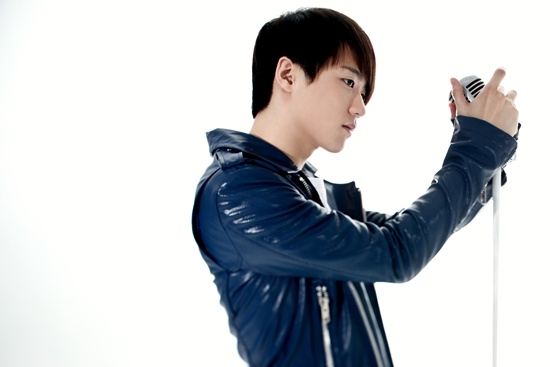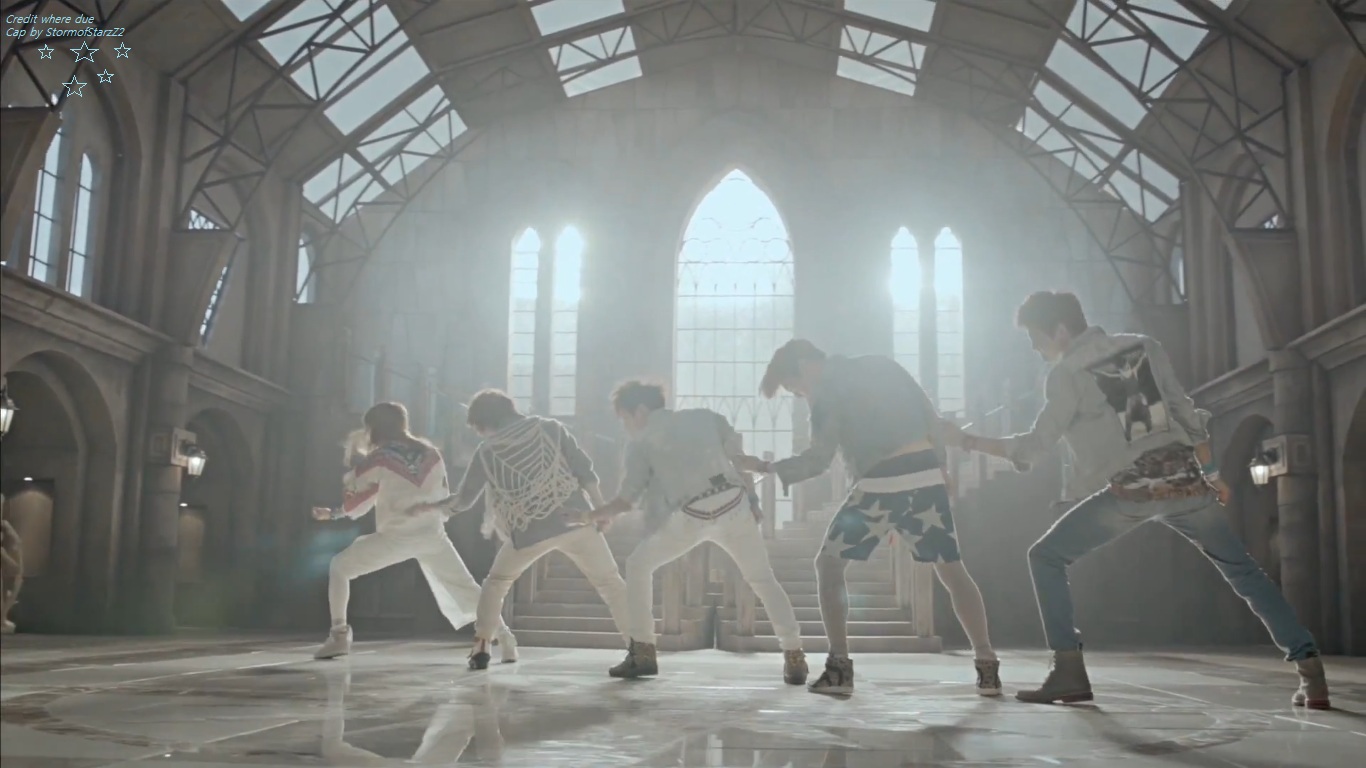Continuing with our ‘I Love K-pop‘ series, what I’m bringing to the table has to do with all that other music Korea has to offer and how that relates to K-pop and enjoyment of the genre. Over the years that K-pop has been around, the definition has grown a bit to encompass more than just the idol groups, usually lax enough to cover some solo artists but not so many bands or musicians. K-pop is definitely still geared towards the bubbly, manufactured sounds touted by young persons on stage, but as awareness of the genre and interest increases — through whatever medium — awareness of other aspects of music on Korean stages similarly increases.
Taking a personal interest in the personalities of idol group members, paying attention to interviews, or even following news sites helps to foster the understanding that Korean music isn’t just about the glitz and dolled up images that the young groups bring. No, there’s a foundation and build-up of music behind all of that, and it’s promising to eventually see what else there is offered. We try to bring more of that exposure here with some of the music we review or our K-pop Indie Gem segment, but the largest vehicles for this widening of perspective are either shows — music shows, variety shows involving music — or simply idol groups involving themselves with some more experienced and just non-idol musicians.
The weekly music shows that we regularly recap have a heavy idol lineup, but that doesn’t stop it from having those breaks when musicians like Dynamic Duo or Geeks drop in for a performance, or if a legend like Cho Yong-pil makes a comeback. For fans that are willing to sit through the show or happen to pass by the video when searching for their favorite idol groups, that’s a current introduction to someone that may be major in the Korean music scene. A good example of this is when some of the shows allow OST performances; not only are they frequently sung by a very talented vocalist, they’re good introductions to other voices like Navi or Lyn that are more popular than they’re given credit for.
 Furthermore, television shows that highly encourage discovery of non-idols like 1000 Song Challenge and Immortal Song 2 promote different styles of music through the variety of guests that appear and with the songs that get chosen. Since the songs sung are selected at random, there’s a high probability that whatever song the members are going to sing is something that you haven’t heard before. It’s probably through means like this that a lot of fans are aware of songs like Park Hyun-bin‘s trot hit “Shabang Shabang” or perhaps have an inkling who a number of other previous groups or older vocalists are.
Furthermore, television shows that highly encourage discovery of non-idols like 1000 Song Challenge and Immortal Song 2 promote different styles of music through the variety of guests that appear and with the songs that get chosen. Since the songs sung are selected at random, there’s a high probability that whatever song the members are going to sing is something that you haven’t heard before. It’s probably through means like this that a lot of fans are aware of songs like Park Hyun-bin‘s trot hit “Shabang Shabang” or perhaps have an inkling who a number of other previous groups or older vocalists are.
Immortal Song 2 is a personal favorite because it’s developed into a show that combines the talents of idols with mature singers and performers, all while covering classics from Boowhal to songs from Kim Wan-sun or DJ DOC. As a show, it forces idols to step it up to give respect to the song they’ve chosen and essentially not embarrass themselves in front of the originals. From a discovery perspective, it brings to the forefront groups like No Brain or Cherry Filter along with vocalists like Sonya or Boowhal’s current vocalist, Jung Dong-ha, as they all bring their own interpretations to the table. Regardless of the reason you check out the performances, there likely will be someone to listen to, especially as the performers often change. It provides a depth to the immediately available music that contrasts sharply with some of the hits we see today.
And perhaps that’s why looking further into what Korean music has to offer can be so attractive. K-pop is good fun even though I sometimes wonder why I’m jamming to a song with lyrics like “I’ll take you in one mouthful like cheese.” But there’s this contrast between the dance/electronic and sometimes overworked songs that K-pop can put out to sell and the idea of a musician making music that they like for the sake of doing music their way. Each has their own objectives with music, and I’ll be the first to admit that I can’t get enough aspects of K-pop: the performances, the variety shows, and the idea of a group working to bring a total package to the stage. But there are times when it’s equally good to sit back and listen to genres that don’t so easily fall under the title of ‘popular music,’ and some of those times are great for alternative notes.
 Probably more than ever, we’re seeing more interactions between idols and more invested musicians, through collaborations for singles or at concerts, working together to make music, or making some noise while exploring new genres. We’re seeing things like B.A.P‘s rock collaboration with band Frozen Flower for their Seoul Live on Earth concerts, SHINee with Beatburger for UMF Korea 2013, Dynamic Duo teaming up with Sistar‘s Hyorin, or Amoeba Culture getting behind Infinite H‘s debut album. There’s SM Entertainment working with 10 Corso Como for their ‘Seoul Melody’ project, the dual nature of Jay Park‘s work as something for K-hip-hop yet still idol material, and f(x) making it to SXSW alongside other mainstays in the alternative rock scene like Galaxy Express or 3rd Line Butterfly. There’s Infinite‘s Sung-gyu and his continuous appreciation of Nell shown through his solo mini-album, tracks on G-Dragon‘s last album involving singers from groups like Jaurim, Jungle Entertainment dabbling in idoldom with M.I.B.,and the Dokkun Project that puts together people like Juniel and Phantom‘s Hanhae for their latest release. All these works, for one, show the different ways K-pop is open to different interpretations. But some of them, ones directly involved with idols, show possibilities when the idols are given different material, taken away from some stricter limitations, often to the delight of listeners.
Probably more than ever, we’re seeing more interactions between idols and more invested musicians, through collaborations for singles or at concerts, working together to make music, or making some noise while exploring new genres. We’re seeing things like B.A.P‘s rock collaboration with band Frozen Flower for their Seoul Live on Earth concerts, SHINee with Beatburger for UMF Korea 2013, Dynamic Duo teaming up with Sistar‘s Hyorin, or Amoeba Culture getting behind Infinite H‘s debut album. There’s SM Entertainment working with 10 Corso Como for their ‘Seoul Melody’ project, the dual nature of Jay Park‘s work as something for K-hip-hop yet still idol material, and f(x) making it to SXSW alongside other mainstays in the alternative rock scene like Galaxy Express or 3rd Line Butterfly. There’s Infinite‘s Sung-gyu and his continuous appreciation of Nell shown through his solo mini-album, tracks on G-Dragon‘s last album involving singers from groups like Jaurim, Jungle Entertainment dabbling in idoldom with M.I.B.,and the Dokkun Project that puts together people like Juniel and Phantom‘s Hanhae for their latest release. All these works, for one, show the different ways K-pop is open to different interpretations. But some of them, ones directly involved with idols, show possibilities when the idols are given different material, taken away from some stricter limitations, often to the delight of listeners.
These slowly developing connections lend Korean artists a helping hand at getting the attention from the other’s fanbase. It’s an opportunity to look at more than idol groups for idol fans and a chance to give idol groups a look for the other party’s audience. For a K-pop fan, it’s not easy to suddenly run into music from someone like Outsider or Donawhale or hear of Cherry Filter or Daybreak. It takes quite a bit of looking to find a decent number of songs. While K-hip-hop has been making leaps and bounds towards mainstream consciousness, the Korean indie scene is one that still hasn’t been tapped, largely due to a lack of promotions in areas most easily accessed by K-pop fans (i.e. music and variety shows). And there’s no real reason for them to go on there when the chance of playing live and to perform the type of eager audiences that idols draw is slim.
The division becomes especially prominent when noticing the lack of translations of lyrics or performances under English titles on video sharing sites. The music is all there, and more accessible than you might think due to the less powerful arms of the entertainment companies that house indie groups, but it takes a nudge in that direction that isn’t easy to motivate. And similarly, a lot of the less mainstream options don’t have that major personality factor added onto the music. While K-pop is focused on music but requires supplemental aspects to continue the draw, these other options rely firmly on their music and entertaining through sound, not on their dazzling personalities. It’s a different way to sell that has less of a chance of being wildly popular because it’s generally less about selling the group and more about selling the music.
While the exposure is clearly guaranteed to add fans to all people contingent to K-pop idols, it’s just that exposure is something all groups could always use. It doesn’t guarantee anything about all non-idols becoming more mainstream in the eyes of international fans; if we’re being real, like Patricia mentioned in her piece, we’re all here not just for the music, and the access to non-idols just isn’t as open. But K-pop has left the door ajar with regard to opening up the more major music of Korea, and as the two continue to meet, they may create wider openings to bring out more of what there is to offer.
(YouTube [1][2][3][4], Images via Happy Robot Records, B2M Entertainment, KT Music, Sniper Sound)




